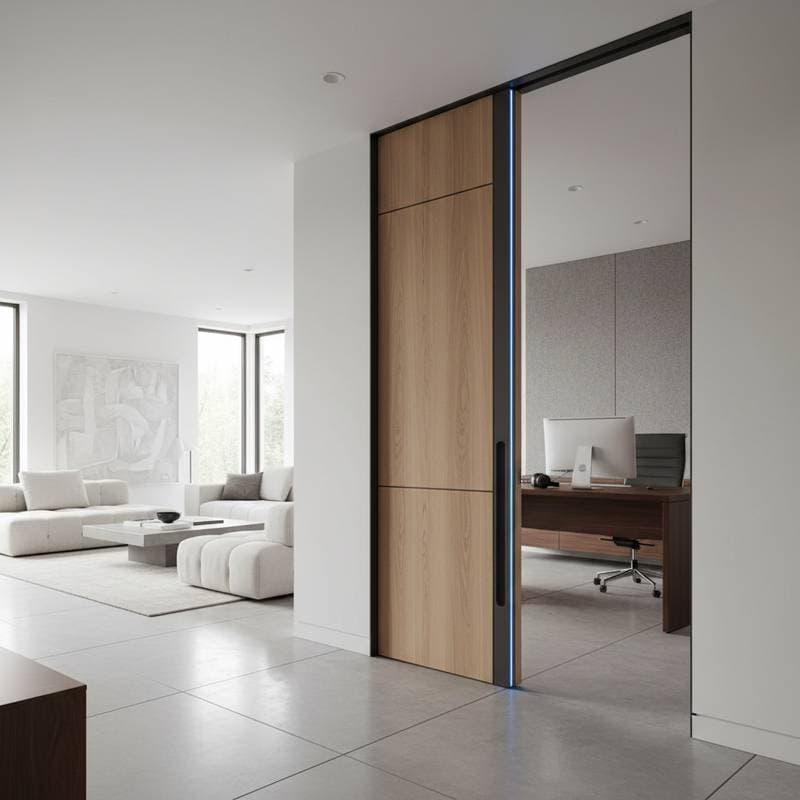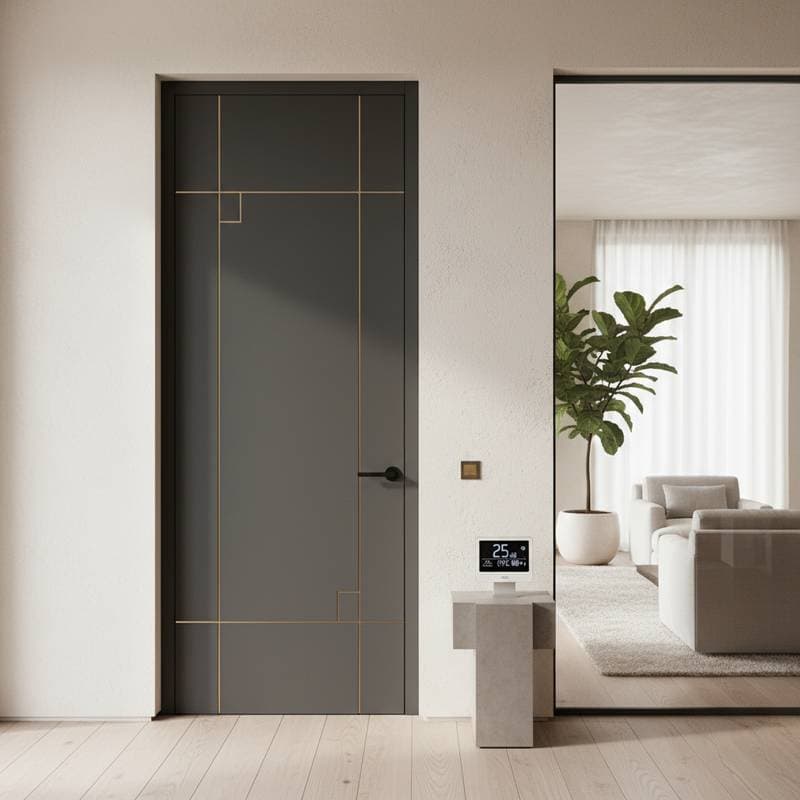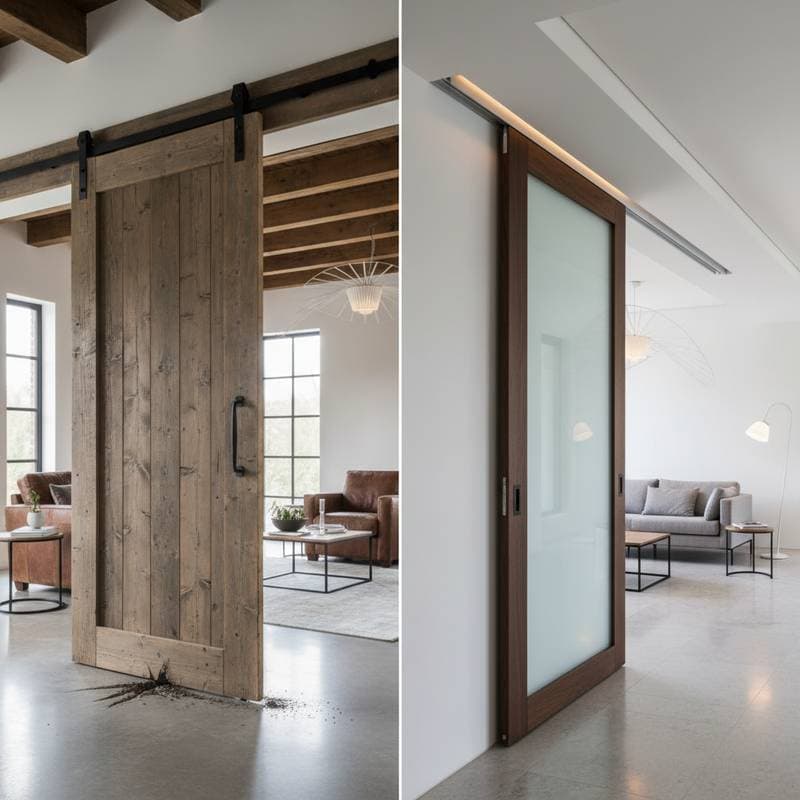Enhancing Open-Plan Living with Soundproof Sliding Doors
Open floor plans continue to dominate modern home designs for their spacious feel, seamless connectivity between rooms, and abundant natural light. However, the lack of barriers often amplifies everyday sounds, such as cooking noises or conversations, disrupting tranquility. Soundproof sliding doors address this issue effectively by reducing noise transmission by up to 85 percent, allowing homeowners to preserve openness while gaining the option for acoustic privacy.
These doors slide effortlessly along tracks, enabling quick reconfiguration of spaces. When retracted, they maintain the airy layout; when closed, they create quiet zones for work, rest, or entertainment. Designers favor them for their versatility across various architectural styles, from sleek urban lofts to cozy family homes.
Benefits of Acoustic Sliding Doors in Modern Homes
The appeal of soundproof sliding doors lies in their ability to harmonize openness with control. Homeowners gain the flexibility to adapt rooms based on daily needs, such as separating a lively kitchen from a peaceful office. This adaptability supports remote work trends and family dynamics without permanent structural changes.
Acoustic performance stems from specialized construction, including dense cores and tight seals that block sound waves. Beyond noise reduction, these doors enhance energy efficiency by minimizing drafts between areas. Their integration into diverse aesthetics ensures they elevate rather than detract from interior design.
Selecting the Right Approach for Your Budget
Homeowners can achieve significant noise reduction through soundproof sliding doors tailored to different investment levels. Each tier offers distinct materials and features, balancing cost with performance and style. Consider your space's size, usage, and aesthetic preferences when choosing.
Budget-Friendly Option (2,000 to 4,000 Dollars)
Standard laminated glass panels in aluminum or medium-density fiberboard frames provide solid sound dampening at an accessible price. These configurations avoid custom work, focusing on off-the-shelf systems that install into standard openings. Bypass or top-hung tracks simplify setup, requiring minimal alterations to walls or floors.
To maximize effectiveness, prioritize high-quality seals and gaskets around the frame and track. These components prevent sound leakage and extend the door's lifespan. Select neutral finishes that blend with existing decor for a cohesive appearance without additional expense.
Mid-Range Option (4,000 to 8,000 Dollars)
Double-glazed panels combining frosted and clear glass deliver enhanced sound isolation alongside visual appeal. Vinyl-wrapped or veneered wooden frames add warmth and durability, resisting wear in high-traffic areas. This level suits homeowners seeking noticeable upgrades in both function and form.
Incorporate soft-close mechanisms and precision rollers for quiet, effortless operation. These features ensure secure closure, optimizing acoustic benefits. Etched or frosted patterns on glass provide privacy while allowing light to filter through, ideal for shared living spaces.
Premium Option (8,000 to 15,000 Dollars)
Custom doors with engineered wood cores, multi-layered glass, and automatic drop seals achieve exceptional noise control. Real wood veneers or powder-coated metal frames align precisely with architectural elements, offering bespoke elegance. Such investments yield superior isolation, often exceeding 85 percent reduction in demanding environments.
Hidden tracks and flush thresholds create uninterrupted sightlines, enhancing flow between rooms. Concealed hardware maintains a clean look while supporting heavy panels. Over time, these doors boost property value through improved comfort and efficiency, justifying the higher cost.
Guide to Materials and Finishes
Selecting complementary materials ensures soundproof sliding doors integrate seamlessly into your home. Focus on options that support acoustic goals while matching your style.
For doors, acoustic models feature dense cores and perimeter seals; choose minimalist glass for contemporary spaces or paneled wood for traditional ones. Windows should use double-pane or laminated glass with insulated frames to reinforce overall quiet. Black or bronze finishes work well in modern settings, while natural wood tones suit transitional designs.
Exterior siding like insulated vinyl or fiber-cement maintains indoor peace by reducing external noise. Vertical board-and-batten styles evoke farmhouse charm, whereas smooth horizontal laps fit modern facades. Trim in matching tones, such as thin black metal for industrial looks or wide white wood for coastal vibes, frames openings elegantly.
Essential Maintenance Practices
Soundproof sliding doors demand less routine care than hinged varieties, thanks to their streamlined design. Regularly vacuum tracks to remove dust, preventing jerky movement. Inspect rubber or silicone seals every six months; replace worn ones to preserve soundproofing integrity.
Clean glass with mild, non-abrasive cleaners and a microfiber cloth for streak-free results. Wipe wood surfaces gently with a damp cloth, avoiding excess moisture. In humid areas, use dehumidifiers to protect frames from warping. Opt for rust-resistant hardware to handle moisture near kitchens or baths.
Common Pitfalls to Avoid
Overlooking door weight can compromise performance; acoustic models are heavier, so verify track strength to avoid sagging. Ensure seals form a complete barrier, as even tiny gaps undermine noise reduction. Test for one-millimeter tolerances during installation.
Mismatched finishes disrupt visual harmony; sample materials against walls, floors, and trim to align undertones. Repeat elements, like hardware style, for unity. Skip DIY for complex setups; hire professionals to guarantee alignment, sealing, and warranty coverage.
Coordinating Colors and Styles
Integrate soundproof sliding doors into your palette for a unified aesthetic. Each scheme builds on core colors and textures to amplify serenity.
In modern minimalist interiors, pair soft gray walls with matte black frames and clear glass, accented by oak floors and steel handles. Warm contemporary spaces benefit from taupe siding, walnut doors, and bronze accents for an inviting upscale feel. Coastal designs feature white trim, pale blue walls, and frosted maple-framed glass for airy calm.
Industrial themes use charcoal frames, reclaimed wood, and smoked glass with dark hardware against neutral backdrops. Classic revivals incorporate white painted doors with brass details and muted green siding for enduring elegance.
Pre-Installation Planning Checklist
Document your space thoroughly to guide selections and avoid costly adjustments.
-
Photograph interiors and exteriors from various angles, including ceilings and adjacent features.
-
Record architectural details like trim, flooring, and window styles for compatibility.
-
Review neighborhood guidelines or HOA rules on visible changes.
-
Assess local climate impacts on materials, such as humidity or sun exposure.
-
Define budget and priorities, focusing on acoustics or aesthetics.
Achieving Lasting Harmony in Open Spaces
Soundproof sliding doors redefine open-plan living by offering control over noise without compromising design. Start by assessing needs: budget options provide quick wins, while premium choices deliver refined performance. Coordinate elements across doors, windows, and exteriors for seamless integration.
Proper maintenance and professional installation sustain benefits for years. Ultimately, these doors empower homeowners to balance connection and solitude, fostering environments that adapt to life's rhythms with quiet confidence.






